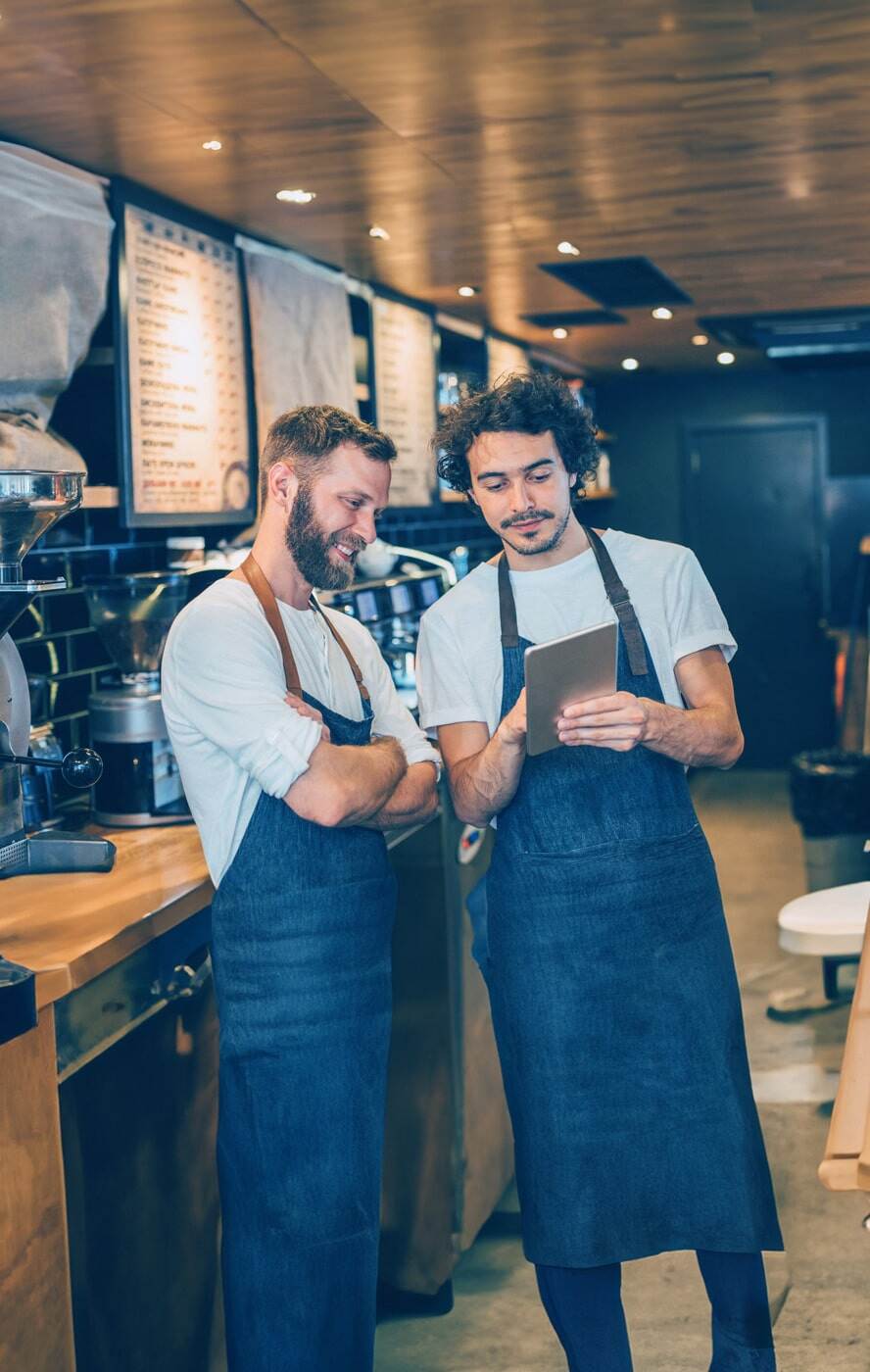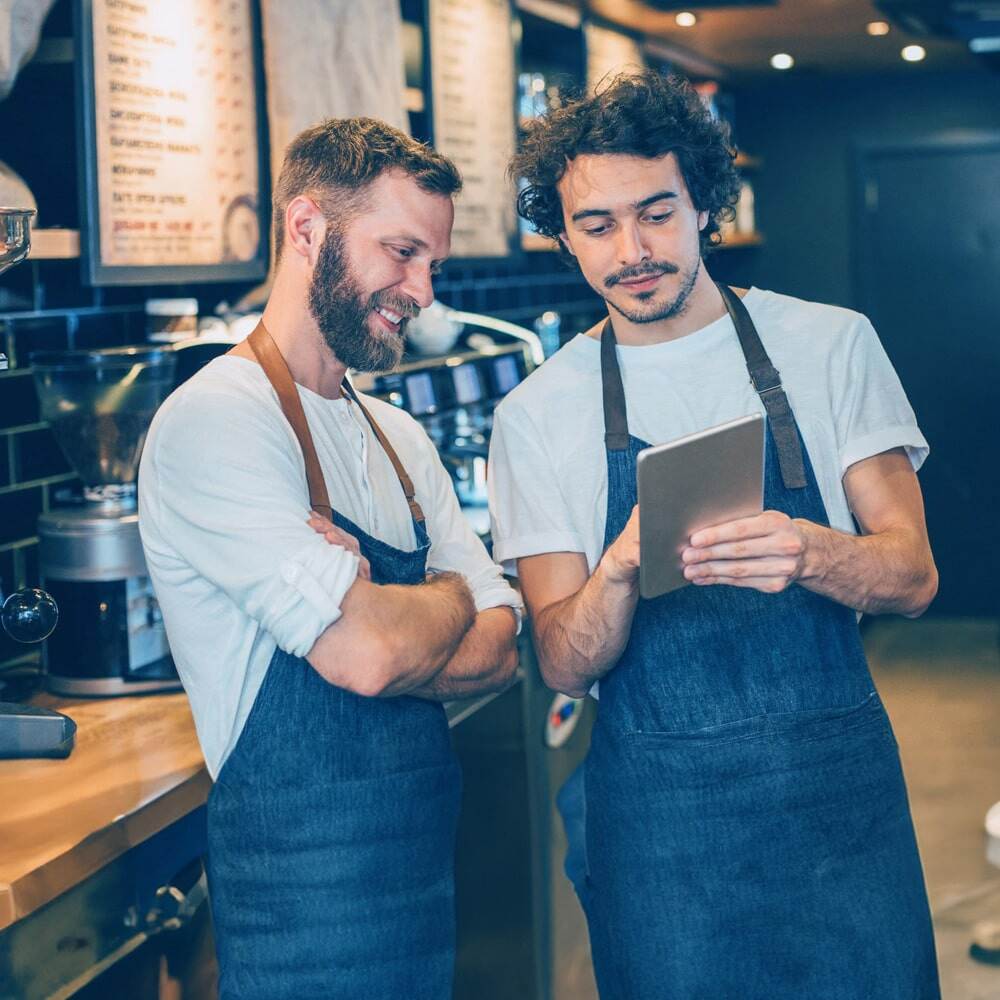Cashless = expensive? The app eats along, eats up money and time? That was true for a long time. But the tide has long since turned. Cash is anything but a cheap solution for the catering industry, because time is money. From ordering to payment, there are sophisticated solutions like pre-order and pre-pay that make life easier for guests and restaurateurs and pay off.
Good reasons for new ordering and payment solutions
First of all, a distinction must be made between ordering on the one hand and payment on the other. They are different processes with different goals and effects.
When an order is placed, one or more products are selected from the entire range. From the guest's point of view, an order is a wish to be fulfilled and, according to the restaurateur, a wish that can be fulfilled. When an order is fulfilled, something is due in return: payment. A classic exchange: enjoyment for money.
Traditionally, ordering, eating and paying took place in the restaurant. So at the same place and more or less at the same time. Ordering and payment were decoupled for the first time by the telephone. The order could then be placed outside and in advance, payment then in cash on collection or delivery. So personal contact was still a prerequisite.
With the new digital technologies, personal contact is no longer mandatory when ordering or paying. Nostalgically, personal ordering and payment can be perceived as a beautiful act.
In fact, however, they come with some limitations: both require time on site - on the part of the guest and on the part of the restaurant. This is in addition to the actual and already time-consuming preparation of the food.
And time also limits what can be offered. Not every dish can be prepared in the best quality in a short time. Decoupling ordering, preparation and provision therefore relieves the burden on everyone involved, including the kitchen.
In addition, restaurateurs basically have to provide the whole range of products. Without knowing whether there will be demand for it on site. Because the capacity utilisation is not known, or the guests - no-show - don't show up. Food waste is often the result. This is where the new ordering and payment solutions come in.
The basics: pre-order and pre-payment
Pre-order: win-win instead of queueing
Pre-ordering - ordering the desired drinks and dishes before going to the restaurant - saves time above all, which is particularly attractive for busy people.
The food is served immediately upon arrival at the restaurant, which not only shortens the waiting time until the meal, but also makes a visit to the restaurant during short lunch breaks or before the theatre possible in the first place.
However, a short stay in a restaurant should not be confused with a quick meal. It is precisely for this reason that pre-ordering leaves more time for the actual meal and for careful preparation. And that is precisely why pre-ordering should not be equated with inferior quality or lower turnover. After all, the food is not kept warm but, on the contrary, prepared and cooked to perfection in peace and quiet. The quality even increases compared to the culinary quick fixes from the kitchen.
And sales are not going down either. Because the order has already been placed. The waiting time for the same order and turnover is thus shortened, so that tables are free again more quickly and can be re-assigned and higher turnover achieved.
Pre-ordering by app or on the website has another advantage: the restaurant knows in advance exactly what the guest wants. This not only facilitates shopping and planning, but also the fulfilment of special requests, e.g. allergies, as well as appropriate, personalised upselling.
Pre-Pay: First money, then enjoyment
Pre-payment can be seen as a reversal of the classic relationship between guest and restaurant. Here, the guest pays in advance and trusts that he will receive what he has paid for.
For restaurateurs, pre-pay is a blessing. The money is there before the guest, so the restaurant is liquid. The guest bears the financial risk. Not surprisingly, guests who have paid in advance are much more likely to stick to agreements and show up at the reserved time. After all, they want something in return for their money.
No-shows are practically non-existent after advance payments by the guest. And even if there were: The restaurant has already received money. So at least the financial damage is limited. And for the guest there is a nice side effect on top of that: at the end of the restaurant visit, only a smaller amount - if any - is due. The pleasant experience does not end with the bitter aftertaste of a high bill. And usually not with waiting for it either.
The examples: The 4 most common use cases
The variety of applications is almost unlimited. Restaurants can offer events, tables, entire menus, all or only individual items on the menu, as well as special dishes or services for pre-order.
1. The Standards: Voting without waiting
In fine dining, whole menus are typically pre-ordered with or without drinks, with a choice of meat, fish or vegetarian options. And with or without wine accompaniment.
In most other business models, the selection and composition of individual dishes has become established. The guest can therefore "configure" the dish according to his or her preferences. This outsources the very process that takes so much time at the table and sometimes causes confusion. Especially when serving larger groups.
2. The Extras: good things come to those who wait
Some products are also very time-consuming to procure or prepare, so that considerable financial risks and useless work can only be avoided by ordering in advance. Expensive storage and food waste can thus be reduced. Premium products can be optimally promoted and sold during the reservation or the reminder of the upcoming visit via email or SMS, and this in a personalised way if the preferences of the guest are already known due to previous queries during the reservation or previous visits to the restaurant.
Pre-order is therefore particularly attractive for two types of guests. For the busy ones with little time. And for the special ones with passions. But pre-order is not a disadvantage for all other guests either. Anyone who now replies that guests don't know in advance what they want is mistaken. Because most guests know exactly what they want. The vast majority only choose between a few favourites on the large menu, i.e. a pizza anyway, and only between two or three of the more than 20 variants.
3. The Commitment: pre-payment against no-shows
Pre-payment is no different. The reasons and variations are numerous. Basically, pre-payment is best combined with pre-order. If you order in advance, you also pay in advance. For the menu, the event, the wine accompaniment, the white truffles, the suckling pig. However, the advance payment does not have to be linked to a specific offer. With the Deposit, a lump-sum prepayment per guest is required, e.g. via credit card, Paypal, Apple Pay, Twint, etc., which is then credited when the guest visits the restaurant.
Similar - also in effect and purpose - are no-show fees. When making a reservation, the guest must provide credit card details. In the rare case that the guest neither cancels nor shows up, the no-show fee is charged to the credit card. (More on the subject of no-shows can be found here LINK New No-Show Blog post).
4. Skonto: Early-Bird-Tarife
Pre-payment can also be combined with attractive prices. Those who pay in advance pay less. In this case, the restaurant rewards the advance of trust, the assumption of financial risk and liquidity - and the guest is happy about lower expenses - and usually orders more. Offering more favourably does not therefore mean: turning over or earning less.
Price-sensitive people in particular can be persuaded to make a reservation for a certain period of time or to order a certain product by means of attractive prices, so that capacity utilisation in the restaurant and kitchen can be controlled and kept at a constant high level in advance via the price (more on dynamic pricing can be found here LINK).
In practice, this also shows: The simpler the order, the more is consumed, the faster the table is cleared and the higher the tip.
And last but not least, the same applies here: With every click in the app, the guest reveals his or her wishes and can thus be served and advertised appropriately and personally.
The Best of Everything
The digital solutions only realise their full potential when they work together, e.g. when the ordering and payment solutions are connected to the reservation system. Because this makes it possible to precisely control for when, what can be ordered and at what price, so that the ups and downs in expenditure and capacity utilisation are balanced out and waiting times can be avoided not only for the guest but also for the staff.
Find out what is possible today in the aleno Academy episode on pre-payment and pre-order. In the free webinar, we show you how it works.
Webinar
In the next aleno-Academy episode, Ivi Balenovic, CEO of aleno AG, shows the advantages of pre-order and pre-payment solutions and the benefits for guests and restaurateurs using examples. COMING SOON.
Why not using the time to join the latest webinar on restaurant marketing? Ivi shows you the technological tipps and tricks to address the needs of your guests and promoting your offer and your events in a targeted manner and bringing them to the guests - exactly what they want. Registser here for the free 20-minute webinar.
Share article with your friends!




